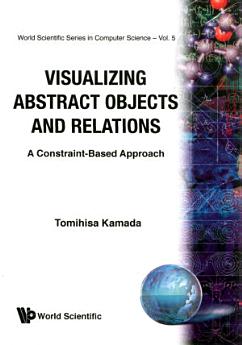Visualizing Abstract Objects And Relations
Tomihisa Kamada
ছেপ্তে ১৯৮৯ · World Scientific Series In Computer Science কিতাপ 5 · World Scientific
ইবুক
176
পৃষ্ঠা
family_home
যোগ্য
info
reportমূল্যাংকন আৰু পৰ্যালোচনা সত্যাপন কৰা হোৱা নাই অধিক জানক
এই ইবুকখনৰ বিষয়ে
Pictorial representations are very useful for humans to understand complicated relations or structures. This is the reason that the user interface of information systems is strongly required to visualize many kinds of information in a wide variety of graphical forms. At present, however, only some very specialized visualization techniques have been developed probably because the generality in the visualization has not been appreciated correctly. This book presents a visualization framework for translating abstract objects and relations, typically represented in textual forms, into pictorial representations, and describes a general visualization interface based on this framework. In the framework, abstract objects and relations are mapped to graphical objects and relations by user-defined mapping rules. The declarative nature of the mapping rules provides users with more global and more flexible layout capabilities. Also presented is an algorithm for drawing general undirected graphs which can be used to visualize network structures as network diagrams. The proposed visualization framework is shown to be general enough to be applied to various types of visualization problems, such as the visualization of semantics of natural language sentences, the generation of diagrams for data structures and program structures, and the drawing of database schema. Examples of all these problems are shown with actual mapping rules and pictorial results.
এই ইবুকখনক মূল্যাংকন কৰক
আমাক আপোনাৰ মতামত জনাওক।
পঢ়াৰ নির্দেশাৱলী
স্মাৰ্টফ’ন আৰু টেবলেট
Android আৰু iPad/iPhoneৰ বাবে Google Play Books এপটো ইনষ্টল কৰক। ই স্বয়ংক্রিয়ভাৱে আপোনাৰ একাউণ্টৰ সৈতে ছিংক হয় আৰু আপুনি য'তে নাথাকক ত'তেই কোনো অডিঅ'বুক অনলাইন বা অফলাইনত শুনিবলৈ সুবিধা দিয়ে।
লেপটপ আৰু কম্পিউটাৰ
আপুনি কম্পিউটাৰৰ ৱেব ব্রাউজাৰ ব্যৱহাৰ কৰি Google Playত কিনা অডিঅ'বুকসমূহ শুনিব পাৰে।
ই-ৰীডাৰ আৰু অন্য ডিভাইচ
Kobo eReadersৰ দৰে ই-চিয়াঁহীৰ ডিভাইচসমূহত পঢ়িবলৈ, আপুনি এটা ফাইল ডাউনল’ড কৰি সেইটো আপোনাৰ ডিভাইচলৈ স্থানান্তৰণ কৰিব লাগিব। সমৰ্থিত ই-ৰিডাৰলৈ ফাইলটো কেনেকৈ স্থানান্তৰ কৰিব জানিবলৈ সহায় কেন্দ্ৰত থকা সবিশেষ নিৰ্দেশাৱলী চাওক।







